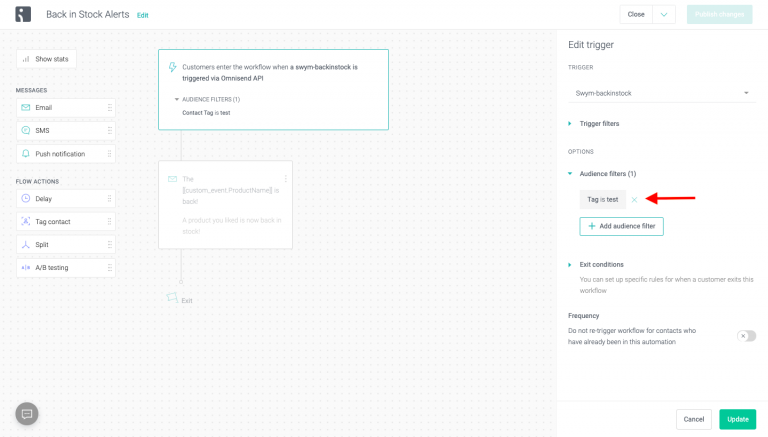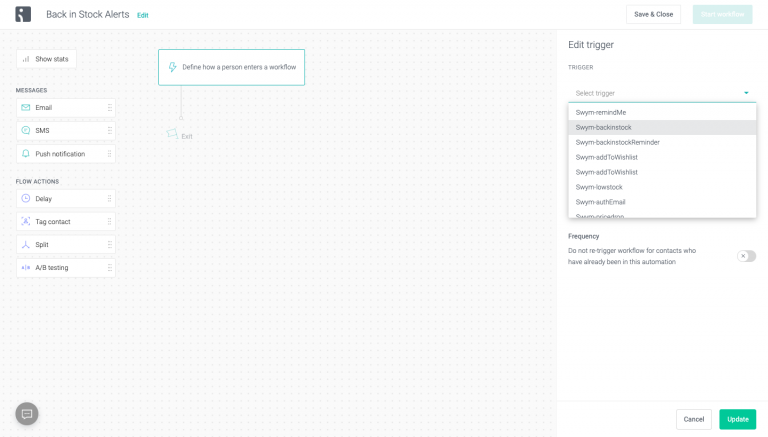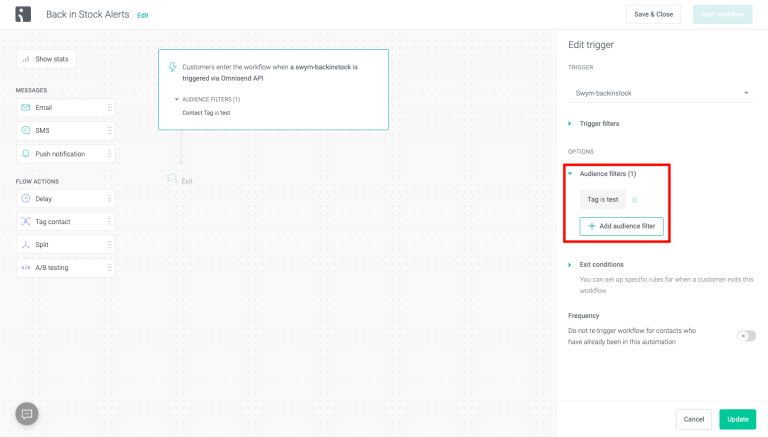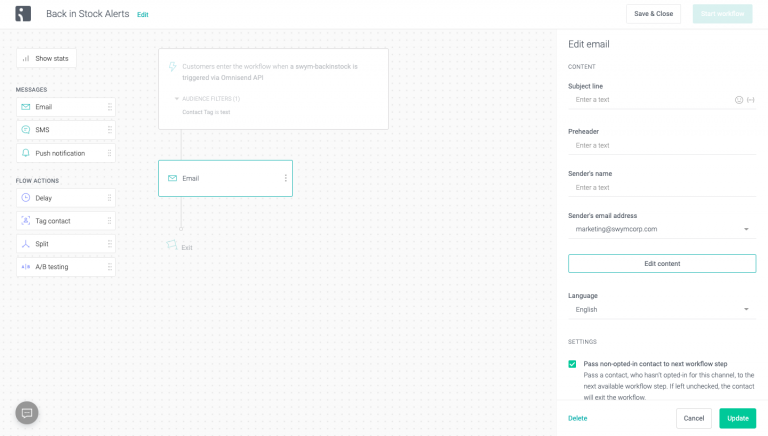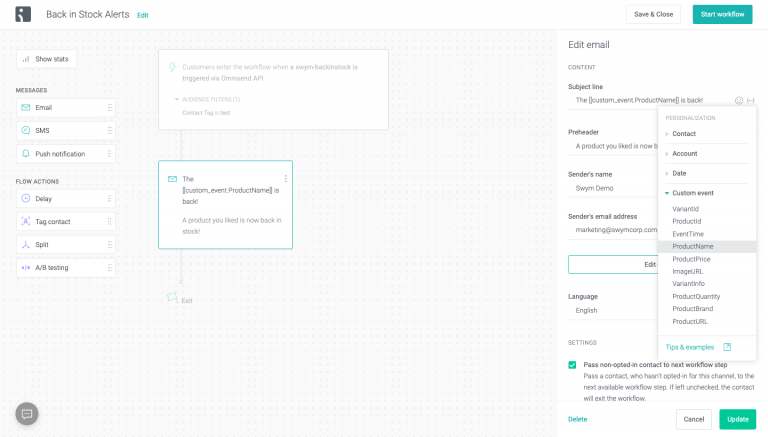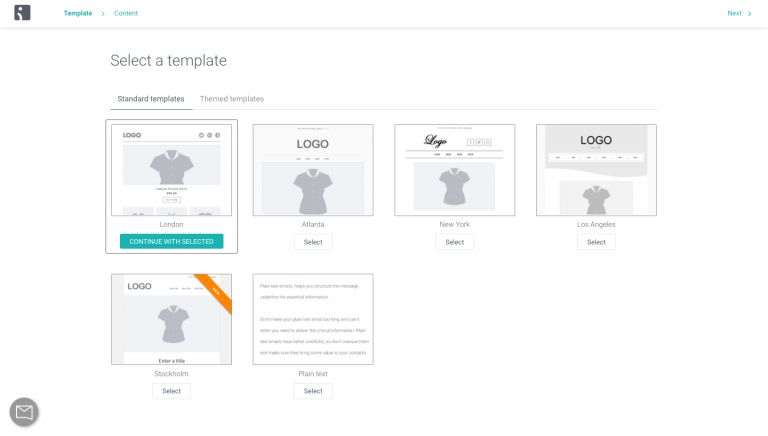MARKETING PLAYBOOKS
Sending Back in Stock Alert Emails via Omnisend
Back in Stock alert emails are an important addition to your list of event triggered campaigns. As we all unfortunately know, it’s your best products that tend to sell out first. Once the products come back in stock again, you have a great triggered marketing opportunity.
Prerequisites
- Swym Starter plan and above
- Omnisend Email Account
- Swym-Omnisend integration enabled
How To Implement
1. Enable Back-in-Stock alert Event
Before you get started, you need to make sure you’ve enabled the back-in-stock alert event within Swym Admin. To confirm, once you’ve logged in to Swym Admin, navigate to Integrations via the left nav. Select Omnisend to view the configuration settings. Make sure that the checkbox next to “A shopper signing up for a back-in-stock alert” is checked.

You can configure the Back in Stock Reminder rule in Swym Admin. Navigate to BiS Product Alerts and click Configure back-in-stock alerts in the Marketing Features section.
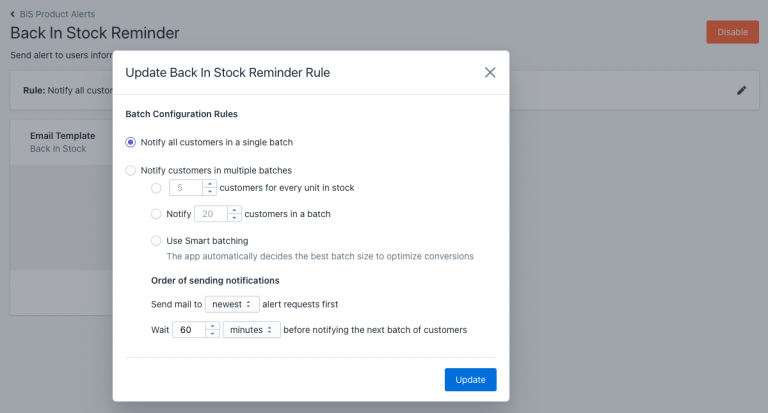
2. Create Omnisend Automation and Select Trigger
In Omnisend, navigate to the Automation page and select “+ New workflow”. In the upper righthand corner click the “Create custom workflow” button. In this example we’re going to call this flow “Back in Stock Alerts”.
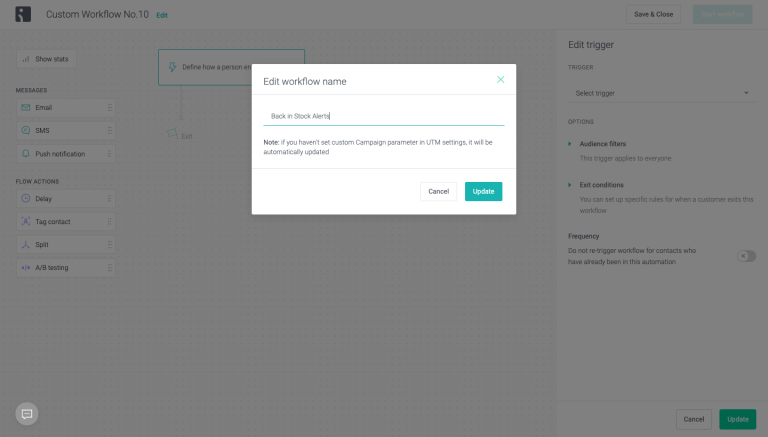
Next you’ll need to set the trigger for this flow. Choose “Swym-backinstock” from the dropdown on the right.
Tip: if you're not seeing "Swym-backinstock" in your dropdown you probably haven't had a user subscribe for a back in stock alert since you enabled the event in Swym Admin. Omnisend will not display flow triggers until they've received at least one event.
Next, we’re going to add an Audience filter, which we’ll use during development for this workflow. We’ll remove it later once we’re ready to make this workflow live. In this case we added a Tag to our test customer, as outlined in this Omnisend help article.
Because the timing of this event isn’t driven by an action taken by the shopper, there’s likely no benefit to adding a time delay before the email is sent.
Next add an email to your flow, this is will be the first back in stock message.
3. Create Your Email Template
Tip: Omnisend uses the 'Swym-backinstock'event for the Wishlist back in stock feature and for Back in Stock Product Alert subscriptions. For our users who have both the Swym apps installed (Wishlist Plus and Back in Stock Product Alerts), there is no way to differentiate this event between the two apps. We recommend using a more generic email content that applies to both your Wishlist Plus users and Back in Stock alert subscribers.
The next thing we’ll do is build an email template that consumes the back in stock data passed from Swym to create our triggered email campaign.
Here are the event-level data elements included with the event:
| Data Element | |||
|---|---|---|---|
| Event | |||
| Event Time | |||
| Product ID | |||
| Product Name | |||
| Price | |||
| Quantity | |||
| Brand | |||
| Category | |||
| Variant ID | |||
| Variant Info | |||
| Variant SKU | |||
| Product URL | |||
| Image URL |
Fill out the subject line, preheader, sender’s name and make sure you’re happy with the sender’s email address. Note that you will be able to use data elements from the Swym-backinstock event to personalize the subject and preheader text. Then click the “Edit content” button to edit the email.
Omnisend has multiple standard templates for you to choose from. For this exercise, we’ll be editing the London template to create a simple back in stock alert email.
Once the template is open, you can add your logo to the top if you like or remove the image block. You can also remove existing blocks or choose to add from other available blocks. We’ll next add a HTML block for the main message content. We’ll use html to pull in data from the Swym-backinstock event.
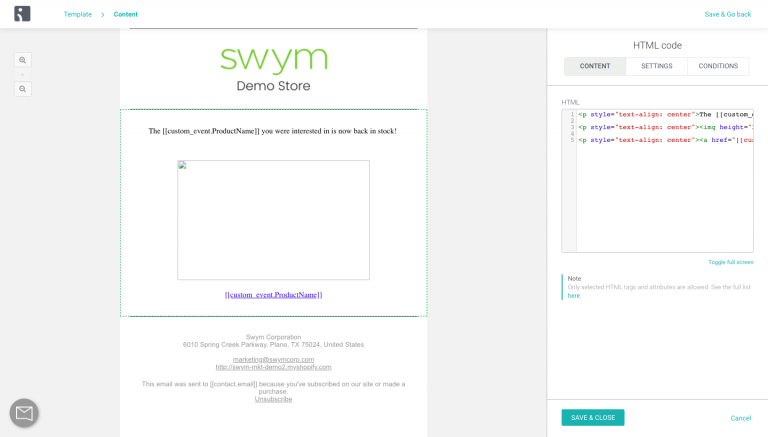
Here’s the html we used for our simple template:
<p style="text-align: center">The [[event.ProductName]] you were interested in is now back in stock! </p>
<p style="text-align: center"><img height="250" src="[[event.ImageURL]]" width="400"/></p> <p style="text-align: center">
<a href="[[event.ProductURL]]">[[event.ProductName]]</a></p"
4. Preview the Message
Once you are satisfied with your template and have it saved, you will need to preview it to make sure everything is working as expected. While you can preview the style of your email on the Omnisend platform, you will need to trigger the action from your store and send an email to yourself to see the final output of the automation. Follow the steps given below to do this.
- Make sure that you have an Audience filter added to this automation. This will ensure that the emails do not yet go out to your customer, when you make the automation live.
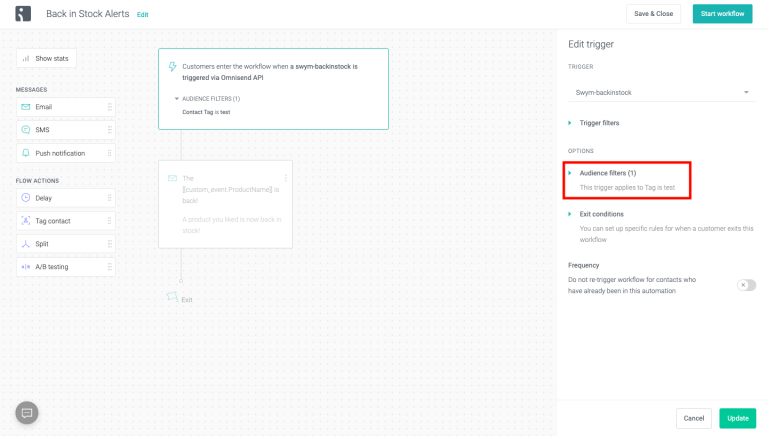
- Click on start workflow to make the automation live so as to trigger the action.
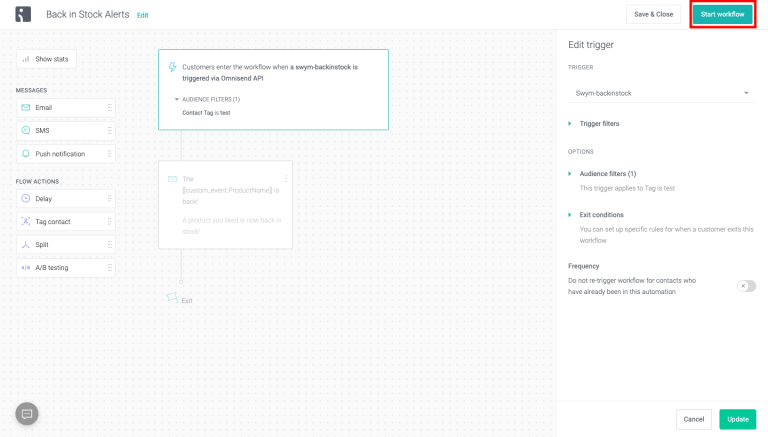
- Subscribe to a product that has 0 inventory on your store or is sold out.
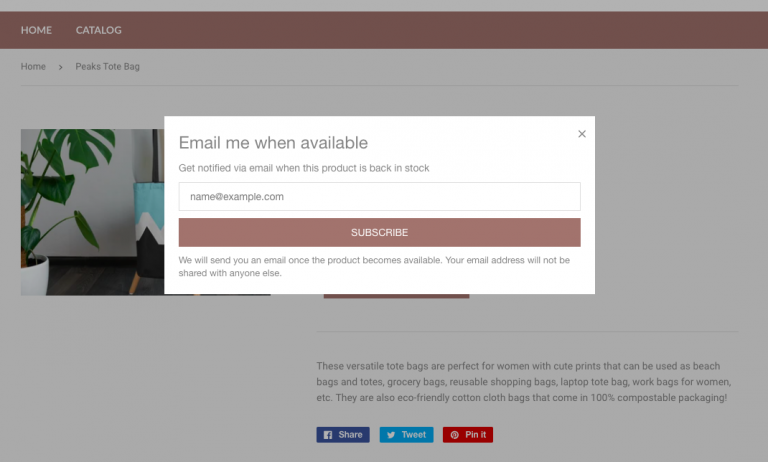
- Go back to your Shopify Dashboard and increase the quantity of this particular product.
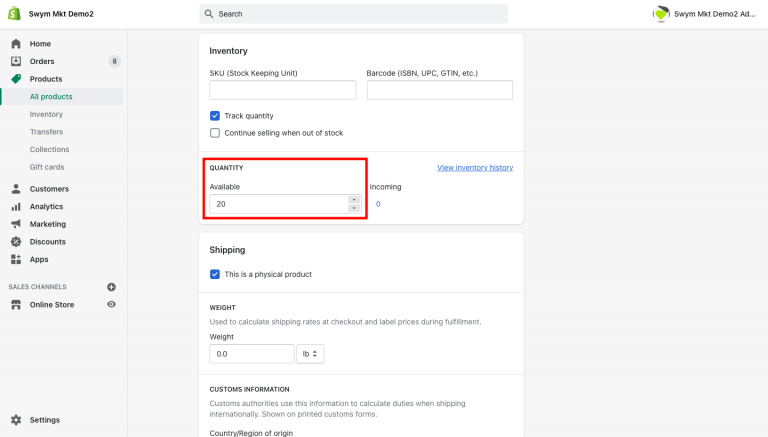
- This should trigger the back in stock product alerts event on Omnisend and you will receive the email to the test audience.
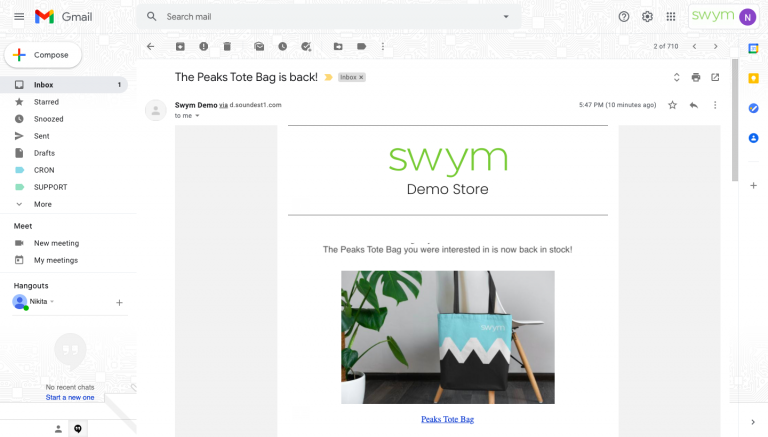
5. Remove the Audience Filter
When you’re satisfied with your testing, the last step is to remove the Audience filter by simply clicking on the cross. With this, your Omnisend integration is live and your emails should start flowing to your customers!
